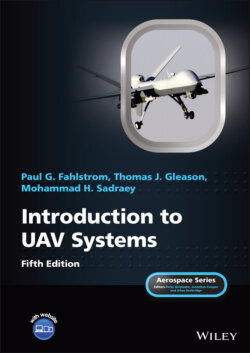Читать книгу Introduction to UAV Systems - Mohammad H. Sadraey - Страница 23
1.2.7 Afghanistan and Iraq
ОглавлениеThe war in Iraq (which lasted from 2003 to 2011) has transformed the status of UAVs from a potential key weapons system searching for proponents and missions to their rightful place as key weapon systems performing many roles that are central to the operations of all four services. At the beginning of the war, UAVs were still under development and somewhat “iffy,” but many developmental UAVs were committed to Operation Iraqi Freedom.
The Global Hawk was effectively used during the first year despite being in the early stages of developmental. The Pioneer, the Shadow, the Hunter, and the Pointer were used extensively.
The Marines flew hundreds of missions using Pioneers during the battle for Fallujah in 2004 to locate and mark targets and keep track of insurgent forces. They were especially effective at night and could be considered one of the decisive weapons in that battle.
The armed version of the Predator, mini‐UAVs such as the Dragon Eye, and a wide range of other UAV systems have been used on the battlefields of Afghanistan and Iraq and have proven the military value of UAVs.
Predator UAVs have been operational in Bosnia since 1995 and as part of Operation Enduring Freedom in Afghanistan and Operation Iraqi Freedom, flying more than 500,000 flight hours on over 50,000 flights. It is interesting to know that in 2002, an Iraqi MiG‐25 intercepted an air‐to‐air equipped Predator. Both fired missiles at each other, but MiG‐25 evaded but Predator was shot down.
During Operation Iraqi Freedom, the Global Hawk flew 15 missions, collecting over 4,800 images from March 18 to April 23, 2003.
